LED ZEPPELIN II AT 52/LZ NEWS/MAKING OF ZEP III PART 2/ THE SONG REMAINS THE SAME SOUNDTRACK AT 45 /THOUGHTS ON THE BEATLES LET IT BE/DL DIARY BLOG UPDATE
TBL Archive Special: Led Zeppelin II – it was 52 years ago …October 22,1969…
Led Zeppelin II – A Kind of Rock…
To celebrate the release of the Led Zeppelin II album this week back in 1969 – some thoughts 52 years on…
Led Zeppelin II:
A Kind Of Rock…. Still Flying
In the same way Miles Davis’ Kind Of Blue defined the jazz genre, the second Zep album well and truly encapsulated rock music as we know it. Dave Lewis re appraises Led Zeppelin II on the occasion of its 51st anniversary.
In reappraising the second Led Zeppelin album 52 years on, it occurred to me that a parallel with the jazz giant Miles Davis is evident.
In the same way that Miles Davis Kind of Blue was the jazz album of choice for those who thought they didn’t like jazz, Led Zeppelin II became the rock album for those who thought they didn’t really like rock.
After Kind Of Blue, Miles Davis went on to make continuing adventurous music (witness In A Silent Way and Bitches Brew), Led Zeppelin also would push the boundaries of creativity with the likes of Led Zeppelin IV and Physical Graffiti.
Neither artist though, quite replicated the sheer shock element of intent so apparent on Kind Of Blue and Led Zeppelin II. These are both works of massive influence that grew their respective audiences manifold.
The album came together in a most haphazard fashion as they toured the UK and US during 969. From April to August they stopped off to record and overdub this second album at no less than eleven studios as follows:
Olympic Studios London, Morgan Studios London, A & M Studios Hollywood, Mystic Sound Hollywood , Mirror Sound Studios Los Angeles, R & D Studios Vancouver, A & R Studios New York, Groove Studio New York, Mayfair Recording Studios, New York Juggy Sound Studio New York and Atlantic Studios New York. Two others -Goldstar Recording Studios in Hollywood and Quantum Recording Studios in Torrence were visited but proved fruitless. It says much for Jimmy Page and Eddie Kramer’s production and engineering skills that the finished album sounded so cohesive -despite being recorded in so many different studios.
It’s also worth noting that During that five month period they made 78 live appearances. In fact, during the whole of 1969 they performed a total of 150 gigs – almost as many as they would play in the next three years.
Put simply, during the early part of their career Led Zeppelin’s work ethic was second to none and it was this desire to be seen and heard wherever they could, that really forged their legacy.
Perhaps surprisingly Jimmy Page admitted to having lost a bit of confidence by the time the album appeared in October 1969 accompanied by an advert that proclaimed it be ‘’Now flying’’. He need not have worried. By the beginning of 1970, Led Zeppelin II had dethroned The Beatles Abbey Road at the top of the charts on both sides of the Atlantic. It marked the beginning of the band’s world domination. It registered over 130 consecutive weeks on the UK chart and remarkably was still holding court when Led Zeppelin III appeared a year later.
So what inspired this sales longevity normally reserved for the likes of The Sound Of Music or Bridge Over Troubled Water? Put simply Led Zeppelin II defined the rock genre in a way that Cream and Jimi Hendrix had hinted at. Here was a seamless forty one minute experience as track merged into track and sledge hammered the listener into submission. At the helm of it all was Jimmy Page. If the first album had laid down the foundations of what this quartet were going to be about, Zep II extended the notion with a brain crushing display of dynamics. And it was Page’s precision production that gave the record its real character, a standard he would uphold on successive Zep albums.
It was also his ability to adapt to the varying studio conditions they found themselves in that gave the album its distinctive sound. Page’s experiments in distance miking, a trick he picked up during his session days considerably enhanced the effect of John Bonham’s straight from the wrist drumming and Robert Plant’s wailing vocal. When it transferred to disc, it reproduced an air of electricity you could almost touch.
This was best personified on Whole Lotta Love, the catalyst opening track and smash US hit single. The lyrics may have been the work of Willie Dixon but the sound was pure Page/Zep. The swirling white noise middle section being the result of a weekend mixing session in New York with Eddie Kramer.
This second Led Zeppelin album also marked the emergence of Robert Plant as the group’s lyricist. He offered up compositional strength that would further flower on subsequent albums. The dreamy What Is And What Should never be ,the emotional love song Thank You with John Paul Jones excelling on organ and the Tolkien inspired Ramble On all sound as fresh today as they did five decades back.
Chris Huston was the studio engineer at Mystic Studios in Los Angeles where some of the tracks were cut. ‘’It was such a small studio’’ recalls Huston. ‘’I was very impressed with Jimmy’s ability to double track and create the sound he wanted first time every time. What you hear is the product of a lot of spontaneous chemistry in their playing’’.
Examples of that spark of chemistry can be heard in the smash and grab solos that light up The Lemon Song and the closing track Bring It On Home- the latter highlighting the band’s somewhat dubious practice for taking unaccredited old blues tunes (in this case Sonny Boy Williamson s song of the same name) and respraying them Zep style. Derivative as this tactic appeared, such arrangements always emerged unmistakably as their own.
Led Zeppelin II also contains one of the finest and few listenable drums solos committed to record in Moby Dick, Heartbreaker – plus a riveting Page guitar virtuoso piece and a kitsch rocker Living Loving Maid that they always said they disliked, but actually packed a tight incisive punch. Another winning factor: The album made memorable use of the newly found freedom stereophonic sound offered, making it an early hi fi buffs delight.
It would of course been easy to replicate this formula on their next record but that was never an option. As the gold and platinum albums began lining their walls, Page and co had already moved on. Refusing to stick to one particular groove, with their second album they had already made the definitive hard rock statement. Mandolins, Martin acoustic guitars, Mellotrons and a date with ‘’A lady who’s sure’’ now beckoned.
The intervening 52 years have done nothing to diminish the startling air of tension that signifies the opening cough and riff of Whole Lotta Love and the commencement of an album that continues to defy the wrath of time.
It’s a kind of rock…and a kind of legend and it’s still flying.
It’s Led Zeppelin II – go and wish it a happy 52nd birthday and play it right now …
Dave Lewis – October ,2021
………………………………….
More on Led Zeppelin II from the TBL Archive:
The Led Zeppelin Reissues: Now And Then
Dave Lewis offers some personal recollections and current thoughts on the first Led Zeppelin reissues…
The Led Zeppelin Reissues Then And Now: Led Zeppelin II
Led Zeppelin II: A kind of Rock then – a kind of rock now …even more so…
THEN:
Led Zeppelin II came in to my life very soon after the release of Led Zeppelin III. I had initially been alerted to the sound of Led Zeppelin a year previous when DJ Alan Freeman played Whole Lotta Love on his Pick of the Pops Radio One show –the effect was to be a lasting one.
As I eagerly devoured any news about Led Zeppelin via the weekly music papers, hearing and acquiring their music as a 13 year old was not so simple. They were rarely on the radio and the necessary funds to invest in an album was not forthcoming – I was a singles buyer and guess what? Led Zeppelin did not release UK singles…
However, after the watershed of hearing Led Zeppelin III, my mission was to acquire Led Zeppelin II as soon as possible. It was duly purchased from Braggins department store in Bedford for two reasons – I was able to hear the opening track on their in store record booths (you may recall in my Zep I tales, the store’s policy for youngsters was to be able to listen to track one side one only) and Braggins sold their LP’s in very nice pvc covers. Result!
This copy was on the German Atlantic label for some reason although given the timespan (November ’70), with the album at the top of the charts it may well be that demand had forced Atlantic in the UK to source copies elsewhere.
Anyway, the fact was I had the album with its imposing fold out cover and grandiose inner cover with their names emblazoned across the sleeve like royal headstones.
The following 12 months my listening pleasure was divided by Zep 1 and II and later a reel to reel recording of their BBC Radio One In Concert show broadcast in April 1971.
Upon the arrival of the fourth album, the first two Zep albums did take a back seat and not long after that I commenced my mission (on LP and cassette) to hear as much live material by this extraordinary group as possible.
There was one other Zep II related initiative –and that was to acquire the US single of Whole Lotta Love backed with Living Loving Maid. This challenge was eventually met via an advert in Sounds for US import singles. So it was in early 1972 that I sent off a postal order to a guy in Newcastle for the princely sum of £1.25 to invest in this hallowed piece of vinyl imported all the way from the USA. Eventually after weeks of waiting (no predicted arrival dates ala Amazon in those days!), this seven inch single in a very attractive Atlantic Records sleeve arrived. It was the beginning another love affair – the collecting of all manner of Led Zeppelin vinyl be it on 7 inch or 12- an obsession that is still rife in my life over 40 years on.
Unsurprisingly I have a variety of Zep II pressings – the original brown bomber with the Lemon Song credits, the rare UK pressing that lists Living Loving Maid as Living Loving Wreck – and a very nice US pressing on thick cardboard acquired earlier this year from a local charity shop. It remains an iconic piece of Zeppelin art.
As for the listening credentials of the album – again in my scheme of things I tend to play it less than some of the later albums – however I can say I have experienced notable moments when I have completely lost myself in its greatness. Again unsurprisingly this has been when I have immersed myself in writing about it – notably on the 35th anniversary back in 2004 when I did extensive retrospective features on Zep II for both Record Collector and Classic Rock. Five years later I celebrated the 40th anniversary of its release with a major feature in TBL 25 which coincided with me meeting and interviewing the director of engineering on the album Eddie Kramer.
In reappraising the second Led Zeppelin album forty years on, it occurred to me that a parallel with the jazz giant Miles Davis was evident.
In the same way that Miles Davis Kind of Blue was the jazz album of choice for those who thought they didn’t like jazz – Led Zeppelin 2 was the rock album for those who thought they didn’t really like rock.
After Kind Of Blue, Miles Davis went on to make continuing adventurous music (witness In A Silent way and Bitches Brew), Zeppelin also would push the boundaries of creativity with the likes of Zep 4, Houses Of The Holy and Physical Graffiti. Neither artist though, quite tapped in so effortlessly again with a statement of intent absolutely and completely of its time as they did with Kind Of Blue and Led Zeppelin 2 respectively.
Here’s how I re- appraised the album back in 2009:
Led Zeppelin II was an instant success going on to spend 130 consecutive weeks on the UK album chart and was still riding high in the top 20 when Led Zeppelin III was released.
So back in 1969 what inspired this sales longevity normally reserved for the likes of The Sound Of Music or Bridge Over Troubled Water? Led Zeppelin 2 defined the rock genre in a way that Cream and Jimi Hendrix had hinted at. Here was a seamless 41 minute experience as track merged into track and sledgehammered the listener into submission.
At the helm of it all was Jimmy Page. If the first album had laid down the foundations of what this quartet were going to be about, Zep 2 extended the notion with a brain crushing display of dynamics. And it was Page’s precision production that gave the record its real character, a standard he would uphold on successive Zep albums.
It was his ability to adapt to the varying studio conditions they found themselves in that gave the album its distinctive sound. Pages experiments in distance miking a trick he picked up during his session days considerably enhanced the effect of John Bonham’s straight from the wrist drumming and Robert Plant’s wailing vocal. When it transferred to disc, it reproduced an air of electricity you could almost touch.
Another winning factor: The album made memorable use of the newly found freedom stereophonic sound offered making it an early hi-fi buffs delight.
It would of course been easy to replicate this formula on their next record but that was never an option. As the gold and platinum albums began lining their walls, Page and co had already moved on. Adamantly refusing to stick to one particular groove, with their second album they had already made the definitive hard rock statement. Mandolins, Martin acoustic guitars, Mellotrons and a date with ‘’A lady whose sure’’ now beckoned.
The intervening 40 years have done nothing to diminish the startling air of tension that signifies the opening cough and riff of Whole Lotta Love and the commencement of an album that continues to defy the wrath of time.
…………………………
NOW:
So the shadow of Led Zeppelin II has loomed large for decades around these parts. The long awaited arrival of this newly remastered version with companion audio disc is most welcome.
As with Zep I the sound just takes over the room from the start. I’ve played this album countless times but hearing it blaring out on a mid week early June morning, the clarity and sheer sonic thrust of this second Led Zeppelin album ensured yet another memorable listening experience.
For example: the delicate bongos behind the beat on Whole Lotta Love, the always impressive stereo panning of the outro of What is and What Should Never Be, Jonesy’s bass throughout The Lemon Song, the delicacy of Jimmy’s acoustic picking on Thank You.
Over on side two and at this point it’s worth mentioning the sheer mastery of Jimmy’s sequencing of the album as one performance crosses into another – Heartbreaker kicks in vibrantly, then there’s the precise backing vocals on Living Loving Maid and then the sheer beauty of Ramble On…
Oh yes Ramble On – signifying a complete lump in the throat tears welling up moment here as the sheer enormity of their achievements just engulfed me.
Another point of reference: listening to these remastered albums I am constantly reminded of the quality and deftness of that heavy chorus technique they applied to so many of their songs – the aforementioned Ramble On being one such delight.
On the home straight, Moby Dick still sounds like the best drum solo ever committed to record, while Bring It On Home is yet another revelation – the pure blues of the intro never sounded so pure and when the riff kicks in …well it’s a majestic moment.
The Companion Audio Disc: The embryonic version of Whole Lotta Love is just stunning in its sheer naivety and sparseness. This tells us so much more than we already knew about the Zep II opener, and as I predicted, has elevated this early Zep anthem to even greater status (also aided by the Dior Homme advert).
Thank You- It’s wonderful to hear the precision of Jimmy’s chiming Vox guitar. The acoustic picking has yet to be overdubbed on this version. On Living Loving Maid the spaces in between where the vocal should be are marvellously offbeat. It’s worth noting that these backing tracks are much more than mere ‘karaoke’ fodder- they genuinely bring it out the instrumental nuances in a way we haven’t been privy to before. Ramble On has that delightful ‘’I ain’t telling no lines ‘’adlib from Robert in more clarity. The fade is a simpler mix with again a few overdubs yet to be applied notably the ‘’Bluebird ‘’ insert. It fades to a full ending.
La La –totally nonscript in a quintessentially Jimmy Page manner. Like I said before, La La is what the phrase ‘tangents within a framework’ was invented for…
Summary: In short, peering into the portal of where Led Zeppelin were at during 1969 opens up a whole new perspective. Led Zeppelin II is still a very special Kind of Rock and now there’s even more of it to enjoy…the phrase ”embellishment of riches” springs to mind…yet again.
DL – June 18th, 2014.
To celebrate the 51st anniversary of the release of Led Zeppelin III here’s the second part of the making of Led Zeppelin III feature I wrote for Record Collector in 2010.
The making of Led Zeppelin III Part 2:
When the group reconvened for studio sessions at Olympic in late May e they had a good ten numbers at the ready to record stage. ‘’We’ll be recording for the next two weeks and we are doing a lot of acoustic stuff as well as the heavier side’’ John Bonham told Melody Maker’s Chris Welch from the studio. ‘’There will be better quality songs than on the first two albums’’
On the recommendation of their office secretary Carole Browne, they decamped to Headley Grange in East Hampshire. Originally built in 1795, Headley Grange was formerly a work house for the poor, infirmed and orphaned. In 1870, the building was bought by builder Thomas Kemp for £420, who converted it into a private residence and named it Headley Grange. In keeping with the then trend of band’s getting it together in the country’’, Fleetwood Mac had recently rehearsed there as page commented on
‘’Headley Grange was somewhat rundown, the heating didn’t work. But it had one major advantage. Other bands had rehearsed there and hadn’t had any complaints. That’s a major issue, because you don’t want to go somewhere and start locking into the work process and then have to pull out.’’. Zeppelin would use this location more extensively on the recording of Led Zeppelin 4 and Physical Graffiti.
For the Zep 3 recordings they employing the Rolling Stones mobile studio and tackled the wealth of song ideas at their disposal. Aside from the softer numbers they also had a series of full on rock numbers to work on. Material such as Immigrant Song , Celebration Day and Out On the Tiles would showcase the more familiar side of the band.
They supplemented the Headley Grange sessions with continued work at their regular studio haunt Olympic Studios and in mid July they also took advantage of the newly built Island Studios in Basing Street London. The Studio Two facilities had opened there the previous March – Zeppelin had the distinction of being the first band to use the Studio One facility when it opened allegedly beating Country Joe in booking the sessions. There was a rumour at the time that Page would assist Country Joe in the recording of his album at De Lane Lea Studios.
Rchard Digby Smith was a trainee engineer at Island Studios. I remember the recording of Since I’ve Been Loving You, he told Phil Sutcliffe. ‘’It was a steep learning curve for me. You were in the studio with such greatness and I was only 20 years old. I assisted on that track when Robert did the vocal in Studio One. It was like a spaceship flight deck looking down through the glass. He did two or three takes and would then go back and patch up the mistakes or bits that needed a bit more work. I’d say it was a team effort but Jimmy Page Page had the final say. When Robert was singing, Page would be at the desk talking to Robert not telling him what to do but working with him.’
John Paul Jones was a man of few words. I remember one time they were in for a couple of days and I engineered because Andy Johns was not around. I can see him there, hand on his chin just going ‘’Mmmmm’’ and you would never really knew what he was thinking.
The studio had a high ceiling and there was a Bayer M50 mic suspended about six feet above the drums. That picked up a lot of the drum sound though the whole kit was also miked. Bonhams drumming was so loud he never took the front skin off and put coats in like a lot of drummers. You knew you were in the presence of greatness. Look behind you and there was Peter Grant sitting on the sofa. The whole of the sofa! There was hugeness about everything they did’’ Andy Johns had worked with them on Led Zeppelin 2 recalled ‘’Those guys worked really fast. You could get two tracks an evening and not be working too late We did one or two mixes just Jimmy and myself. He was really easy to get on with. I remember a big black Gibson violin bass which he played’’
It was around this time a series of break up rumours began circulated. The lay off gave fuel to the idea that all was not well with the band. Publicist Bill Harry was keen to squash any such notion. He arranged for John Bonham to be interviewed by Roy Carr for the NME a week before their Bath Festival appearance. ‘’To put a complete end to these break up rumours,’’ Bonzo informed Carr ‘’Anyone who goes to Bath will see and hear Led Zeppelin as they’ve never seen or heard us before’’
The band played their first show in three months on June 22nd in Reykjavik. This show at the Laugardalsholl Sports was part of a cultural exchange visit organized by the British Government. Brief black & white Footage of the visit can be seen on the 2003 official Led Zeppelin DVD..This show was part of a cultural exchange extravaganza organised by the British government and promoted by international booking agent, Jasper Parrot. Led Zeppelin were the official representatives of the UK pop industry. The venue was later to host the famous 1972 World Chess Championship between Bobby Fischer and Boris Spassky Rare black and white footage of their arrival in Iceland and performing Dazed And Confused was discovered and cleaned up for use in the official Led Zeppelin DVD. During this trip, Robert was inspired to write the lyrics for Immigrant Song. Plant: “We went to Iceland and it was one of those times when you go to bed at night, but you don’t sleep because the daylight’s still there – a 24-hour day. There was just an amazing hue in the sky and it was one of those things that made you think of Vikings and big ships and John Bonham’s stomach!”
Five days later they topped the bill at the Bath Festival performing to an audience of over 100,000. It was reported that they turned down US appearances at New Haven and Boston to fulfill this prestigious date. Zeppelin had appeared way down the bill on the event a year previous. The fact that they returned just twelve months later as the star attraction was ample proof of their growing status. Peter Grant made sure they appeared just as the sun went down pulling the plug on the previous act Flock in the process. They went down a storm garnering five encores. They closed the set, as was the custom, with the extended ‘How Many More Times’ medley. Plant made a speech to the crowd prior to the final encores: “We’ve been playing America a lot recently and we really thought that coming back here we might have a dodgy time. There’s a lot of things going wrong in America at the moment, that are getting a bit sticky. It’s really nice to come to an open-air festival where there are no bad things happening and everything’s turned out beautiful.”
Allegedly the concert was filmed on Grant’s insistence for possible use in their in progress film project. Nothing has ever surfaced from this official source – a minute or so of amateur cine footage is the only filmed remnant of the land mark appearance. The next week’s Melody Maker reported ‘Five Encores For Zeppelin’: “Led Zeppelin stormed to huge success at the Bath Festival. About 150,000 fans rose to give them an ovation. They played for over three hours – blues, rock and roll and pure Zeppelin. Jimmy Page, in a yokel hat to suit the Somerset scene, screamed into attack on guitar, John Paul Jones came into his own on organ as well as bass, and John Bonham exploded his drums in a sensational solo. And the crowd went wild demanding encore after encore… a total of five!”
John Bonham enjoyed his Bath night: “The atmosphere was fantastic really when you consider it was cold and windy. And even when it rained they sat through it and could still be happy. I did’t think you could get an atmosphere like that at a concert.” Peter Grant remembered later: “Bath was great. I went down to the site unbeknown to Freddie Bannister and I found out from the Met Office what time the sun was setting and it was right behind the stage and by going on at 8 in the evening, I was able to bring the lights up a bit at a time. And it was vital we went on to match that. That’s why I made sure Flock or whoever it was got off on time. Not that we had anything to lose as we’d been paid £20,000 up front!
‘’Bath was a turning point in recognition for us’’ Page stated ‘’There have been one or to magical gigs and Bath was one of them’’.
The Iceland and Bath dates saw them incorporate the newly written Immigrant Song as a set opener – a status it would retain up until late 1972. That’s The Way was the first introduction to their acoustic side and word was out that this forthcoming album would see something of a change in direction. A week later they travelled to Germany for a successful four-date tour, capitalising on their success in one of their most lucrative European markets where the Whole Lotta Love single had been a number one smash alongside the Led Zeppelin II album. Following those dates the band readied themselves for a lengthy sixth American trek. Just before they left it was reported by Melody Maker that Jimmy Page would complete the mixing and editing of the third album in New York. Peter Grant was quoted as saying it would be ‘’Entirely different ‘’from their previous albums. It was also hinted that they would perform in Japan and Australia at the end of the year –it would actually be a year later when they would reach those territories.
TO BE CONTINUED…
The Song Remains The Same Soundtrack at 45:
45 years ago, on the afternoon of Thursday October 21 1976, I anxiously tore open the box marked Warner/ Elektra/ Atlantic Records at the WH Smith record shop where I worked to reveal for the first time the gatefold sleeve of, as the label spine gloriously put it ‘’The Soundtrack To The Film The Song Remains The Same‘’.
Yes the only official live album released during the band’s life time is 45 years old.
I have much affection for that original double live album – it captures a certain era of innocence when we knew a lot less about the actual construction of such things and just enjoyed it for what it as – four sides of live Zep to accompany the release of their long awaited film The Song Remains The Same. Whilst the on stage experimentation of their 1972 US tour had levelled out, these New York ‘73 concerts a year later capture all the swagger and verve of a band in the throes of conquering the world.
In those innocent days I was completely immune to any criticism of the boy’s work. I was therefore absolutely incensed with Nick Kent’s less than complimentary review of the film in the NME. So much so that I wrote a letter to the paper the next week pointing out an inaccuracy on his part. This was duly printed – I used the pseudonym ‘Ace Wallbanger’, a reference to the soccer team I played in, the infamous and much feared in a keystone cops sort of way Wallbangers FC.
Left: Angry Ace Wallbanger of Bedford has the right of reply…
Thanks to the esteemed Eddie Edwards we now know a whole lot more of how the live set was assembled via Eddie’s amazing Garden Tapes analysis.
of a few years back
See link at http://www.thegardentapes.co.uk/tgt.html
I know Eddie was far from happy with the revised version of the album that was issued in 2007. It cooked up a lot healthy debate at the time.
I was actually ok with Kevin Shirley’s mix. He cleverly kept the excitable crowd reaction high in the mix which adds a real ‘right there’ front row authenticity heard to great effect on the opening blast of Rock And Roll, Celebration Day and Black Dog. In extending the original double album, the six previously unreleased performances included a very fluent Over The Hills And Far Away, the riotous The Ocean and of course it finally gave a home to the brilliantly sublime recording of Since I’ve Been Loving You –always a stand out performance in the film and one of their best ever live moments.
I’ll be playing through both versions of the album over the weekend –and there is much to admire – pull them out yourselves for a nostalgic blast of prime era Zep on this 45th anniversary.
Dave Lewis – October 21, 2021
The Beatles Let It Be new reissue…
I was well pleased last Friday to take receipt of the fantastic new Let It Be 6 LP package ( pic here at Slide Record shop in Bedford) and the Get Back book – all adding to the enjoyment of an album and Beatles period that has much significance for me and continues to do so – here’s why…
Let It Be and me…
I’ve had something of a 51 year love affair with The Beatles’ Let It Be album.
It all began way back in April 1969 when The Beatles released a new single titled Get Back. As previously chronicled, this was the inspiration for me to get right back into music after a brief infatuation with The Dave Clark Five when I was seven years old.
James Bond, Thunderbirds, The Daleks and football took over for a while but aged 12 I was ready to tune in once again
It was Get Back that really attracted me back to music. I had heard it on Tony Blackburn’s Radio One breakfast show and repeatedly on the juke box in our local café.
I recall an advert in the NME that proclaimed it as ‘’The Beatles as nature intended.’’ What also attracted me to the record was the distinctive green Apple label design – and the B side that displayed the core of an Apple. Having been drawn to that beautiful image I was forever asking older friends to put The Beatles’ B sides on the Juke box – this is how I came to be very familiar with Don’t Let Me Down, Old Brown Shoe and Come Together –the flip sides of Get Back, The Ballad of John And Yoko and Something, the trio of singles released by The Beatles in 1969.
In September of that year The Beatles issued their Abbey Road album. An older friend bought it and I listened at his house in wonder at it’s amazing contents – not least the medley on side two.
The NME had already flagged that The Beatles next album would be titled Get Back and comprise of recordings made in early 1969 to accompany a film of the same name. This was planned to be released in 1970.
During the early months of 1970 I eagerly scanned the news pages of the NME for more news. It transpired the album and film would now be titled Let It Be and in early March 1970 the Let It Be single was issued backed with the quirky You Know My Name (Look Up the Number). The single came in an eye catching picture sleeve. I of course loved the single and the accompanying film clip of it shown on Top of the Pops.
On April 10, the Daily Mirror broke the story that Paul had quit The Beatles. The acrimonious reasons behind the split dominated the pop headlines over the next12 months. The Beatles had out grown The Beatles and as Lennon would put it – the dream was over.
However, there was one more Beatles album release and it came on May 8, 1970. Let It Be was packaged in an outer cardboard box that contained a deluxe book and the actual record catalogue number PX1. It sold for a penny less than £3.
Far too much for my pocket money but the same older friend did buy it and we marveled at that package, the book and the album’s contests. Let It Be for me sounded like a great album -with it’s off mic comments and raw playing, tender moments, jams and quirky singalongs –the informality of it all touched a chord – this was The Beatles presented in a unique way as never before.
However, not everyone was enamored with this final chapter. The NME called it a cheap cardboard epitaph. To this day I disagree with such a notion.
On Thursday June 18, 1970 I went to the Granada cinema in Bedford to see the Let It Be film. We had the day off school as Britain was going to the polls to vote in a general election that saw Edward Heath gain a shock Conservative win over Labour’s Harold Wilson.
It was also Paul McCartney’s 28th birthday.
The film was a poignant farewell – the highlight being the final footage of them performing live on the on the rooftop. I loved the film for its illuminating inside look at The Beatles at work.
Over the next few years, The Beatles Let It Be era was never far off my radar.
When I started buying bootlegs in 1972, alongside the Zep titles, I eagerly invested in The Beatles Get Back Sessions and the curiously titled Renaissance Minstrels Vol 1 , Both these albums contained various outtakes and unreleased material from the Let It Be/Get Back period.
They provided key insight to this captivating last gasp. The likes of The Walk and Teddy Boy sounding like lost jewels.
Fast forward to Christmas 1975 –the BBC screened the entire film on Boxing Day and it looked fantastic.
During that first TV showing I even listed down for my own reference all the songs that appeared during the film – I still have that hand written note as can been seen here.
The BBC screened it again four years later on Boxing Day 1979. On that occasion my very good friend Dec taped it all on his newly acquired video recorder. When I got my own video recorder rented in 1981, Dec made me a copy of the Let It Be film – I now had all that marvelous footage at the flick of a button.
The bootleg CD explosion in the early 90s led me to many more recordings of the Get Back/Let It Be period as title after title appeared – notably a complete version of the fabled January 30,1969 rooftop gig – and the Let It Be film on DVD. I also have a bootleg of the original Get Back album as first proposed by producer Glyn Johns – complete with the intended cover of that photo of them in early 1969 at EMI in Manchester Square -re creating the Please Please Me cover shot. The 1969 image was later used for The Beatles red and blue compilations issued in 1973 (I bought both of those on the release date).
Mark Lewishon’s astonishingly detailed The Beatles at Abbey Road and The Beatles Chronicle books offered up vital accurate information of the 1969 sessions. I was lucky enough to meet Mark and attend two launches of his books inside the hallowed walls of Abbey Road Studios itself. In 1983 I also attended EMI’s The Beatles at Abbey Road presentation inside studio number two where so much of the Beatle magic had been created.
Over the years, The Get Back saga has continued to fascinate me and I’ve invested in a fair few books and magazines about the subject. The official Beatles Anthology made available some of those unreleased recordings I had craved on those bootlegs. Paul McCartney then re-invented the album by releasing Let It Be Naked – a fresh pre Phil Spector mix of the stark original versions of the Get Back/Let It Be project. I avidly soaked up that one with it’s 20 minutes of bonus recordings.
In the October 2010 issue of Mojo, they covered the final Beatles era in a superb feature. This issue was made available with an accompanying and CD vinyl album -Let It Be Revisited. This was a re imagining of the original album by a variety of artists including Beth Horton, Wilko Johnson and Judy Collins. The vinyl run came in a limited edition of 1,000 and I eagerly snapped that one up – I am always a sucker for Beatles cover versions.
I of course have various pressings of the album – notably a French pressing and the US pressing with the gatefold sleeve. Until just recently one has remained elusive.
That is the original UK release in the box set package. Very good condition copies go for over £400. Due to the flimsy nature of the cardboard and book binding, most copies are somewhat flawed. There was a very good conditioned copy sold at the local Bedford Slide record shop a while back for £200.
In January 2019 I had a big result.
Flawed or not, I could not pass up an original Let It Be box set I came across at a Victoria Record Fair. Though nowhere near mint it wasn’t too bad. The outer cardboard box is somewhat trashed but acceptable. The Get Back book is in surprisingly good condition with no loose pages and the record is very good. This was on offer for what I consider a bargain price of £30. I managed to knock the guy down slightly and secured it for a mere £25.
Now that’s bargain and in Beatles collecting terms, one of the very best I’ve had.
So, at long last I have the original package that all those years back I marvelled and have been obsessed with throughout my 51 years of music passion.
To own it as The Beatles put it ”as nature intended” is an absolute thrill.
It inspires so many memories of those halcyon days of 1969/1970.
Those memories are ignited every time the needle touches down and John Lennon’s plaintive cry of ‘’I did a pygmy by Charles Hawtry and the deaf aids – phase one in which Doris gets her oats’’ signals the entry of The Beatles performing Two of Us – on our way home.
In acquiring that Let It Be box set it felt like it had finally come home – and it, and I have memories longer than the road that stretches out ahead…
Postscript October 2021:
My thoughts on the new Let it Be reissue…
The Beatles’ Let It Be multi disc package is a thing of absolute beauty.
Musically there is so much to admire across the 5 LPs and CDs – the sensitive new mix of the 1970 album, the release of the Glyn Johns produced 1969 Get Back version of the album – plus plenty of outtakes, jams, work in progress rehearsals (George’s All Things Must Pass and John’s Gimme Some Truth both surface in early versions here) and illuminating studio chat.
Add to that a truly magnificent accompanying hardback book that is packed with forensic detail into how each song was constructed courtesy of Kevin Howlett. This brings a new clarity to the complicated recording process afforded to the likes of Get Back, Across The Universe and I Me Mine – the latter derived from an early January 1970 Abbey Road recording session between Paul, George and Ringo (John was away in Denmark at the time). There are also some wonderful photos from this two day session that also included work on Let It Be.
Like all successful major reissue packages, Let It Be tells us so much more than we already knew about the album and the circumstances surrounding it. The complexity of the Let It Be/Get Back saga posed the compilers of this set quite a challenge… it’s one they have pulled off in droves…
Its absolutely brilliant from the design and content through to the superb presentation of the timeless music that is The Beatles…
With the release of this new Let It Be package, I now have yet more memories to cherish longer than the road that stretches out ahead…
Dave Lewis – October 21, 2021
DL Diary Blog Update:
Saturday October 15:
… Saturday is platterday…
On National Album Day celebrating women in music on the player with some early morning Joni…the wonderful Court And Spark album…
Saturday October 15:
At the TBL stall at the excellent Bedford VIP Record Fair with my fellow record collecting comrades Steve, Alastair and Ian…
Wednesday October 19:
Always a welcome sound – the new issue of Mojo dropping through the door and looking at the cover it’s a rather splendid one….
Update here…
I was as usual anxious about the Bedford VIP Record Fair and having the self esteem required to front the TBL stall. Once again aided by Steve L, I was able to get though it and it went well – of course it was great to catch up with many fellow record collecting comrades including Ian Saikia and Alastair Chorlton.
Janet is struggling on as we await a referral for a consultation at the hospital. It’s heartbreaking to see her struggle again after all she has been through with her leg in the past two years but unfortunately it has got worse in recent weeks and we need to find out why and what guidance we need. That remains a waiting game.
That horrible depressive feeling of not being able to enjoy the things I should in the way I should, has returned and that has added to the low mood here. I am trying to move on with some of the current TBL projects best I can but it’s an effort. The ongoing Covid situation as we go into the winter months is also a worry for us all.
Hopefully the half term school break next week will give Janet a much needed few days rest and a recharging of the batteries as we face up to the autumn and winter weeks ahead.
There has been some much needed inspiration via the music including the Let It Be reissue as detailed above and I am looking forward to the new reissue of the David Crosby If I Could Only Remember My Name album…
Thanks for listening – stay safe and well you very lovely people…
Dave Lewis – October 21 , 2021
TBL website updates written and compiled by Dave Lewis
Follow TBL/DL on Facebook:


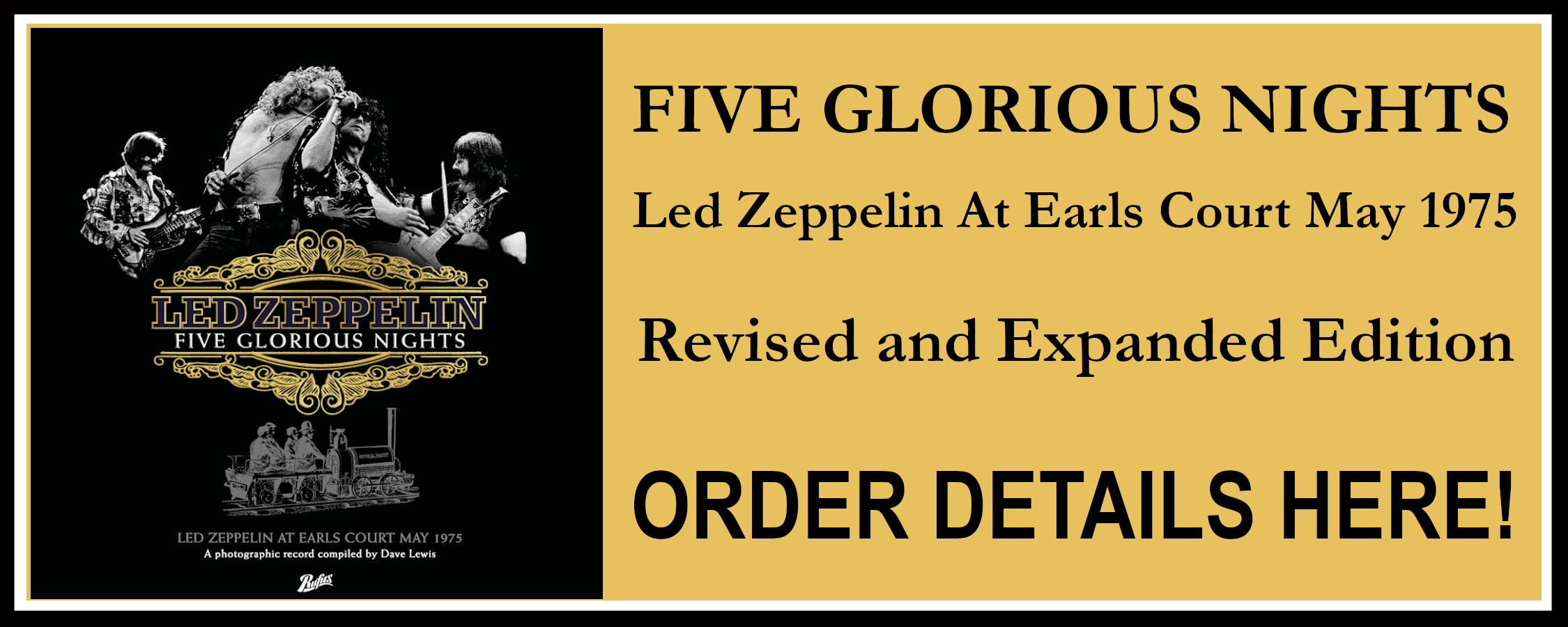


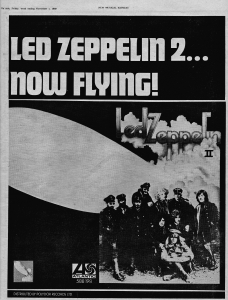
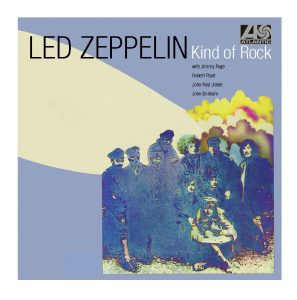
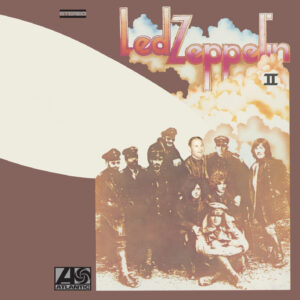
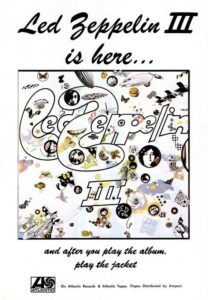
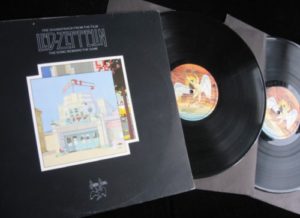
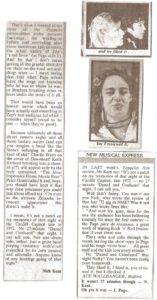
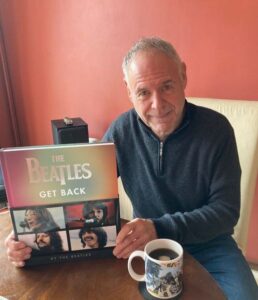
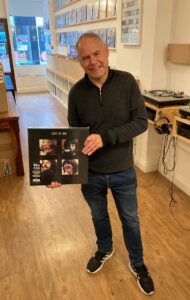
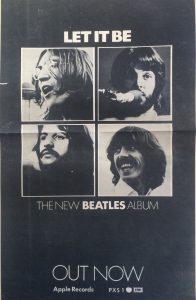
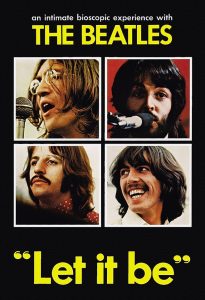
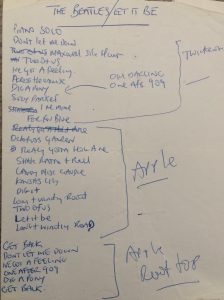
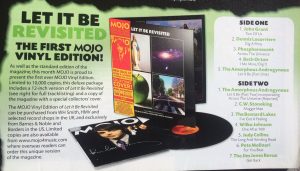
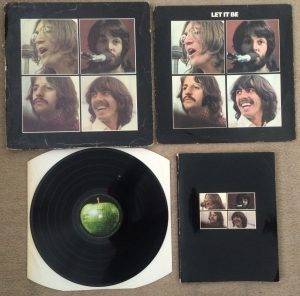
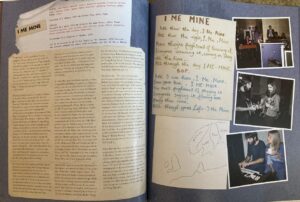
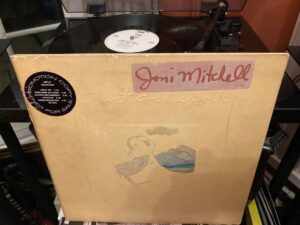
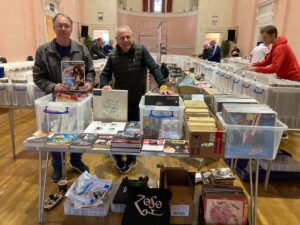
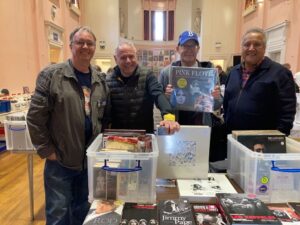
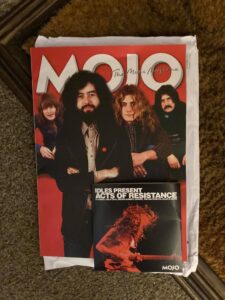









Hi Dave,
Hang in there, mate. And all the best to you and Janet. You won’t remember this, but I met you at the front row of (the now defunct) Point Theatre in Dublin for P&P in 1998. You’re doing such an important thing for us Zeppheads – my Wednesday ritual is to check your diary update.
You’re an inspiration – keep going ….!
Tom
Just had an e-mail to say that Robert’s Saving Grace gig in Birmingham has been re-arranged for 16th December! Yippee, can’t wait! It’s at the Symphony Hall, where the acoustics may be a bit better than the Town Hall. Hopefully I’ll get a decent recording of it to share!
Keep you spirits up, Dave, I’m sure things will get better with you both soon.
Cheers,
Steve
Leave your response!
TBL Products
About TBL
Tight But Loose Website edited by Dave Lewis and Gary Foy.
Tight But Loose Magazine created by Dave Lewis 1978. TBL/Web launched by Dave Linwood 1995. TBL logo by Mike Warry.
All written material and photographs are copyright © Tight But Loose. Not to be reproduced without prior permission.
Tight But Loose welcomes input / info / tour reports / CD reviews / CDR’s & Tapes on any Zep related topic past and present.
Archives
Recent Posts
Recent Comments
Tags
Views